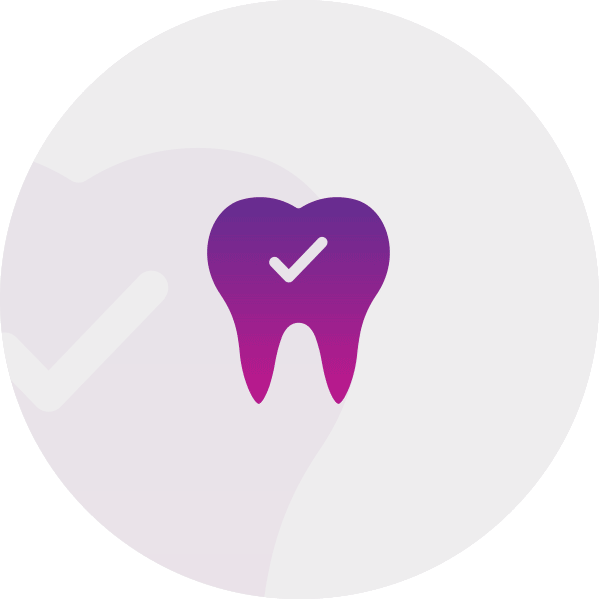The decision to get braces is a big one. Factors like cost, time and overall appearance all come into play. Anyone, whether you’re a teenager or an older adult, might feel you need braces but aren’t comfortable with how you might look. The good news is that there are many types of braces on the market today.
Today’s orthodontic solutions offer a range of aesthetic options. This means anyone of any age can now feel comfortable with their smile while straightening their teeth.
In other words, gone are the days of metal railroad tracks being the only type of braces!
Of course, the best way to decide which braces are right for you is to consult your orthodontist. But we thought we’d take a look at the different varieties available to help you make your decision.
6 Different Types of Braces to Choose From
Metal Braces
Traditional metal braces are still a highly effective way to deal with severe misalignment issues. Thanks to advancements, these types of braces are now lightweight, too.
Metal braces are made from steel wires and metallic brackets. The brace exerts pressure on your teeth to gently move them into a straighter position. The brackets and wires are connected to each other with O-rings, but these rings aren’t always mandatory, like with self-ligating braces.
Today’s metal braces are extremely durable. You’ll usually wear them from 1 to 3 years, all depending on your oral orthodontic issues.
Lingual and Ceramic Braces
If you’re not too keen on your treatment being obvious to other people, you might want to consider ceramic braces. These types of braces are not as noticeable as their metal counterparts.
Discretion comes at a higher cost, but if discretion is what you’re after, you may want to consider ceramic braces. These braces’ brackets are the same colour as your teeth, helping them to blend in naturally. You can even choose wires the same colour as your teeth for complete blending!
You can take discretion to an even greater level with lingual braces. These braces feature brackets and the posts at the back of your teeth. – they’re practically invisible.
SureSmile Braces
SureSmile uses advanced 3-D imaging, virtual simulations and robotically bent archwires to create a fully customised treatment.
Instead of manually bending wires to move your teeth one-by-one into position, SureSmile uses 3-D technology to move your teeth more efficiently, directly and accurately.
Invisalign Braces
Over the last few years, clear Invisalign braces have gained huge popularity. The success rate alone of these types of braces is amazing.
Unlike the above braces we’ve mentioned, Invisalign braces can be taken out when you eat or brush your teeth. The clear aligners are made using clear BPA-free plastic, and you must change aligners every two weeks.
Every time you change your Invisalign trays, your teeth are gradually moved into their new position. The aligners work discreetly to give you a straighter smile.
Invisalign braces aren’t for everyone, though. If you suffer from severe overbites or underbites or malocclusions, this is not the ideal treatment.
Keep in mind that you must wear your Invisalign braces for at least 22 hours a day for your treatment to work.
Palatal Expanders
If you have severely overcrowded teeth, there are two options that could help. Tooth extraction is one and the other is palatal expansion.
While this is not exactly braces, it’s still worth a mention. It used to be that tooth extraction was the preferred solution. Thankfully, modern orthodontists recommend you wear a palatal expander for a period of time. It’s a device designed to fit your palate and apply pressure to the back of the upper teeth, gradually moving the teeth apart.
The device expands your palate, making it possible for other types of braces to be fitted to help correct the position of your teeth.
Forsus Appliances
It’s important for children to see an orthodontist from as early as 7 years old. Some children need to use Forsus appliances to correct a complicated overbite. Forsus appliances have replaced headgear for braces. The appliance is a spring that’s worn inside the cheeks and then attaches to the different types of braces to help adjust the position of the jaw.
Which Braces Are Right for You?
When it comes to the types of braces you should choose, it’s not just all about aesthetics. There are a number of things to consider, including hygiene, cost and your desired result.
Budgets for Braces
Some braces treatments are more expensive than others. If you’re not paying for your braces, then you’ll need to check which options are feasible and which are way out of budget.
Due to today’s technology that customises brackets, and considering the time it takes the lab to create the brackets, lingual braces are often pricier that Invisalign braces or traditional metal braces.
Some people unnecessarily worry about how they’ll look. They might even be self-conscious about braces long after everyone else has forgotten about them. But if you’re worried about people noticing your treatment, then consider ceramic, lingual or Invisalign braces.
You Might Need a Retainer, Too
Once your braces come off, you may need a retainer. This helps keep your teeth in their new, straight position. Don’t forget to discuss your retainer options when looking at different types of braces with your orthodontist.
Time to Choose Your Braces
Different types of braces have all come a long way from the world of metal train tracks we used to know and fear. At Medland Orthodontics, we take great pride in offering the best orthodontic experience and custom plans for each patient.
We’ll help you choose the best type of braces for your orthodontic situation and ensure you receive the best treatment from our orthodontists in both Brisbane and the Gold Coast.
Book a consultation in Brisbane or the Gold Coast with the team at Medland Orthodontics.






